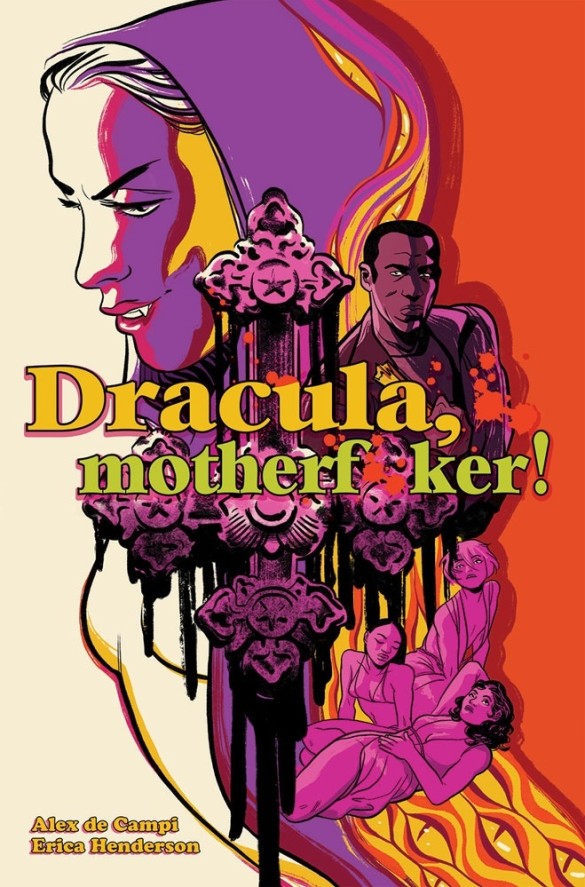Revisiting Alex de Campi and Erica Henderson's Haunting Take on Dracula

Is there any classic horror monster that’s spawned quite as many innovative stories as Count Dracula? Recent years have seen the release of Saladin Ahmed and Dave Acosta’s graphic novel Dragon and the Department of Truth team of James Tynion IV and Martin Simmonds offering up their own spin on the Count. With the release this week of Alex de Campi and Erica Henderson’s Parasocial, it seems like the right time to revisit their previous collaboration: the stylish, phantasmagorical Dracula, Motherf**ker!

Here’s the thing: if this graphic novel had just been a 1970s-set retelling of/followup to Bram Stoker’s original novel, that likely would have been enough to make for an entertaining and compelling read. (And that’s before getting into the nuances and flourishes of Henderson’s art.) But this goes deeper than that; in her afterword, de Campi writes that “you can also read it as about the unchecked predatory actions of powerful men and the compromises and tragedies of the women who think it’ll be different for them than for all the other women beforehand.”
The storyline is relatively straightforward: in a kind of prologue, Dracula’s brides conspire against him, staking him through the heart and sealing his remains away where no one can — one hopes, anyway — return him to undeath. Almost a century later, in 1970s Hollywood, actress Bebe Beauland is concerned about aging in an industry that values youth and good looks, and undoes the brides’ handiwork.
Cue a massacre of the party where Bebe is first turned, which brings a familiar name into the proceedings: Quincy Harker, here reimagined as a Black photographer in the Weegee mode. He begins to think that something bigger is happening here — Beauland’s corpse taking off from the morgue being one particularly noticeable sign of this. And soon enough, his path crosses with both Dracula’s and the Count’s longtime adversaries.
The storytelling here is taut, and follows some familiar beats: an everyman drawn into an ancient conflict where they’re at a loss both in terms of their abilities and their lack of the full picture is a narrative with plenty of mileage. But de Campi’s script complicates this matter somewhat: the Brides are opposed to the book’s overarching villain, Dracula — but they’re still vampires, which puts them in a more antiheroic role at best. They also have a tendency to make marginally racist comments to Quincy, who has little tolerance for that part of their alliance of convenience.
Full disclosure here: I knew Henderson’s work primarily from her (terrific, energetic) work on Marvel’s The Unbeatable Squirrel Girl. What she’s doing here is very different, and while the two projects share an expressiveness and a kinetic quality. Here, there’s a more dreamlike quality to some of the pages, especially any time Dracula himself is on screen. That has to do with this book’s most uncanny storytelling decision. Here, Dracula isn’t an elegant figure in a cloak or a wizened man in a robe licking blood from razors; instead, he’s a presence of almost cosmic horror, one whose body shifts in proportions, and one whose eyes and fangs evoke a primal terror.
Dracula, Motherf**ker! also features some dynamic choices in the lettering. The story includes vampires being able to compel humans to do their bidding, a familiar feature from many stories of the undead. De Campi and Henderson use a series of different fonts to illustrate this: Bebe Beauland’s hypnotic voice is rendered differently on their page than her dialogue, and Dracula’s reads differently than either — helping to reinforce the feeling that he’s a being of a different order than the humans and vampires in his orbit.
If you’re reviving a classic horror character, it helps to have a great reason for doing so. Dracula, Motherf**ker! is both an unnerving story and a compelling argument for its themes — and if you’re looking for an uncanny read this October, it fits that description on several levels.